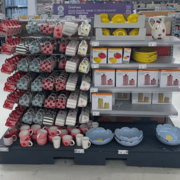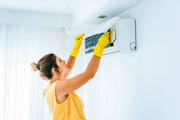
As Australia passed a new milestone with over 4.16 million homes and businesses now sporting solar panels, a familiar supermarket brand entered the clean energy arena.
ALDI Solar launched in September 2025, promising simplicity with fixed-package solar and battery deals.
But in a mature and highly competitive market, is convenience enough to justify the switch?
ALDI Solar’s offering in detail
Unlike traditional solar installers who design systems tailored to each roof, ALDI Solar offered just two fixed packages.
Package 1 cost $6,999 and included a 10kWh home battery (2 x 5kWh modules) and a 6.6kW solar panel system with a 5.5kW hybrid inverter.
Package 2 cost $8,499 and came with a 20kWh battery (4 x 5kWh modules) alongside the same 6.6kW solar system and hybrid inverter.
Both packages included free blackout protection, though fire-resistant panelling cost an additional $385 for weatherboard or timber homes and $275 for two-storey houses.
All components carried 10-year product warranties and 25-year performance guarantees on the panels.
Installations were handled by Tempo, the company behind ALDI’s Stirling, Ambiano and Bauhm appliances, across Sydney, Newcastle, Wollongong, Melbourne, Brisbane, Gold Coast, Sunshine Coast and Canberra, with expansion to South Australia and Western Australia planned for 2026.
New 2025 solar incentives worth knowing about
The federal government launched the $2.3 billion Cheaper Home Batteries Program on 1 July, offering rebates to lower battery costs.
State programs also shifted—Victoria’s feed-in tariff fell from 3.3c/kWh to 0.04c/kWh, while NSW introduced Virtual Power Plant incentives up to $1,500.
Check current rebates in your state before committing to any system.
Why 2025 is different for solar buyers
The market had matured rapidly, with 3.2 GW of new rooftop capacity added in 2024 alone, pushing total installations past 4 million.
Average new rooftop systems now ranged from 8-11kW, making ALDI’s 6.6kW offering appear modest.
With $12.7 billion invested in new clean energy projects in 2024, including $9 billion in large-scale installations, competition had increased and costs had begun to fall.
The result was a market where quality standards were higher and experienced installers plentiful, giving homeowners more choices than ever.
Expert concerns
'A system designed for your specific home will save you more.'
Peacock warned that ignoring roof size, direction, shading and other home-specific factors could reduce solar efficiency.
He noted that many Australians were now installing larger, more efficient panels, and that 6.6kW systems were often insufficient for homes aiming to go all-electric or charge electric vehicles.
Battery sizing also posed challenges. While a 20kWh battery suited most homes, a 6.6kW solar system struggled to keep it charged year-round.
Installation and warranty questions
ALDI selected installers on behalf of customers, limiting the ability to research companies or read prior reviews.
Installation quality could greatly impact system performance, yet ALDI’s model prevented homeowners from choosing their preferred installer.
Warranties were another area of concern. Components carried separate contracts via Tempo, potentially complicating service down the track.
The Altius brand panels, batteries and inverters remained largely unknown in Australia, raising questions about long-term reliability.
Peacock highlighted the 10-year panel warranty as a red flag, compared to the 20-25 year standard offered by reputable manufacturers.
Questions to ask before choosing ALDI Solar
- Does 6.6kW suit your energy needs and future plans?
- Are you comfortable with unknown brand components?
- Can you live with a 10-year panel warranty vs industry-standard 20-25 years?
- Do you want to choose your own installer?
- Have you compared quotes from established local providers?
Better timing, better options
Ironically, ALDI Solar launched just as government incentives and market competition were at their strongest.
Federal battery rebates and NSW’s VPP incentives could be combined to maximise savings, while rooftop and large-scale solar costs had fallen 2 and 8 per cent respectively in 2024.
Given over one-third of Australian households already had solar, buyers had the luxury of comparing multiple providers and customised systems.
Verdict for thoughtful buyers
ALDI Solar’s pricing appeared competitive, but the one-size-fits-all approach sacrificed customisation.
In a market with experienced installers, tailored systems, and generous rebates, careful comparison remained the smartest path.
Before committing, homeowners should get quotes from multiple established providers and weigh prices, warranties, component brands, installer reputations and system specifications against their roof and energy needs.
The solar revolution was well underway in Australia, but convenience alone should not dictate investment choices.
What This Means For You
Over 4.16 million Australian homes now have solar, highlighting how widespread and mature the market has become.
ALDI Solar simplifies the process with just two fixed packages, but this convenience comes at the cost of limited customisation for your home’s specific needs.
Experts have raised concerns about the unfamiliar component brands, system sizing, and the lack of choice in installers, which could affect long-term performance and reliability.
With government rebates and competitive pricing from established installers, there may be better options that offer greater value and peace of mind.
For homeowners weighing their solar options, these factors are especially important when deciding how to invest in a system that will meet both current and future energy needs.
If you’re curious about how battery upgrades can directly impact your energy bills, there’s a real-life story that dives into the numbers and outcomes.
It explores both the potential savings and the concerns homeowners face when taking advantage of new solar battery programs.
Reading this piece can give you practical insights that complement what we’ve discussed about fixed-package solar systems.
Read more: Cheaper solar batteries slash energy bills, spark concern among homeowners
Clean Energy Australia 2025 report | Clean Energy Council — Reports that rooftop solar now generates over 12 per cent of Australia's electricity and powers 32.3 per cent of households.
https://cleanenergycouncil.org.au/news-resources/clean-energy-australia-report-2025
Australian Photovoltaic Institute • Market Analyses — Confirms over 4.16 million PV installations in Australia with a combined capacity exceeding 41.8 GW.
https://pv-map.apvi.org.au/analyses
Clean Energy Australia 2025 report | Clean Energy Council — Notes 3.2 GW of new rooftop solar capacity added in 2024, pushing total installations past 4 million.
https://cleanenergycouncil.org.au/news-resources/clean-energy-australia-report-2025
Solar Report: Second Quarter 2025 — Reports that the average new rooftop system now ranges between 8-11kW.
https://www.energycouncil.com.au/reports/solar-report-second-quarter-2025/
Clean Energy Australia 2025 report | Clean Energy Council — Highlights that new clean energy investments totalled $12.7 billion in 2024, including $9 billion for large-scale projects.
https://cleanenergycouncil.org.au/news-resources/clean-energy-australia-report-2025
Solar Report: Second Quarter 2025 — Notes that most Australians are installing larger systems with panels exceeding 23 per cent efficiency.
https://www.energycouncil.com.au/reports/solar-report-second-quarter-2025/
The Future of Solar Energy in Australia: Trends and Predictions for 2025 — Reports that manufacturers are producing high-performance panels with efficiencies over 23 per cent.
https://halcolenergy.com.au/solar-news/future-of-solar-energy-in-australia-trends-for-2025/
All the Changes and Updates Coming to the Solar and Renewable Industry From 1 July 2025 — Details the $2.3 billion Cheaper Home Batteries Program and state-level VPP incentives up to $1,500.
https://www.energymatters.com.au/re...olar-and-renewable-industry-from-1-july-2025/
All the Changes and Updates Coming to the Solar and Renewable Industry From 1 July 2025 — Explains the increased VPP incentives and their combination with federal programs.
https://www.energymatters.com.au/re...olar-and-renewable-industry-from-1-july-2025/
Utility-scale solar tipped to reach 50 GW in five years – pv magazine Australia — Reports continued cost reductions in solar technology with large-scale solar down 8 per cent and rooftop costs down 2 per cent in 2024.
https://www.pv-magazine-australia.c...le-solar-tipped-to-reach-50-gw-in-five-years/
Solar Power in Australia: 2025 Update — Confirms that over 4.16 million installations are already generating clean energy.
https://www.smartcommercialsolar.co...-australia-2025-update-smart-commercial-solar
Have you explored all your options for solar and battery systems, or are you still deciding which approach suits your home best?







